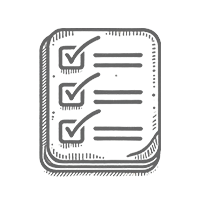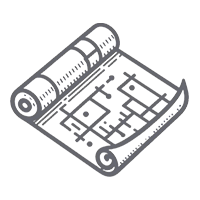Case Study
Centene Recovery Platform
Role
Lead Product Designer, Consultation, Facilitation, Strategy, Research
Platform
Web App, Internal Software
Team Formation
Hybrid Product Team, Agile, Scrum
Duration
16 Months
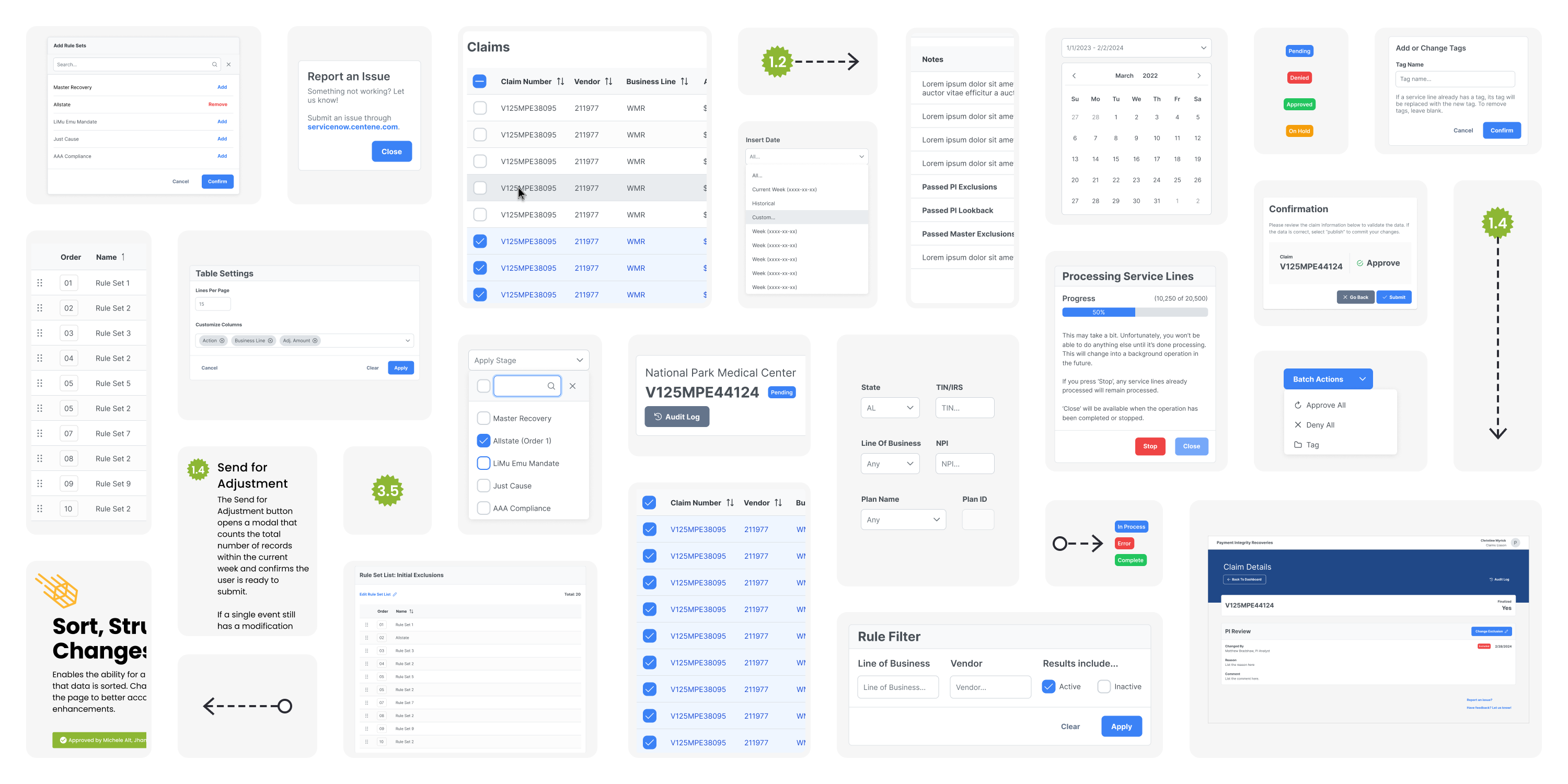
Background
American Healthcare in a Nutshell
The American healthcare system stands out for its myriad challenges and shortcomings when compared to other developed nations. Struggling with issues of accessibility, affordability, and equity, it lags behind other systems in providing comprehensive care. Despite the high cost, the U.S. ranks last in healthcare quality among developed nations.
To put it bluntly, the American healthcare system is a mess. The complexity of the system is so great that a single person can’t possibly understand the intricacies of the entire process. Even if they could, the for-profit motivation of the industry provides enormous friction in simplifying and bettering the system.
Who is Centene?
Centene Corporation is a multinational healthcare company that provides a range of services to government-sponsored healthcare programs, focusing primarily on underinsured and uninsured individuals. As of writing this, Centene is listed as number 25 on Fortune 500 with 74,000+ employees. It is one of the largest providers of Medicaid and Medicare services in the United States, also offering services through the Health Insurance Marketplace and the TRICARE program for military personnel and their families.
Of the 33 developed nations in the world, the United States sits among them alone as the only predominantly private, for-profit health insurance model.
The Problem
When a patient leaves a hospital, the hospital packages all services provided into a single claim and bills the patient’s insurance. The insurance then reviews the claim, validates the patient is covered for the services received, and calculates how much each service costs. However, the time required validate a claim is longer than the required window for paying the hospital.
To solve this, insurance companies choose to overpay the hospital so the paitent can continue to recieve care. Once the claim is done being validated, the insurance company will then bill the hospital with how much money should be refunded.
The American healthcare system today:

Medical Bills Are the #1 Cause of Bankruptcy in the U.S.
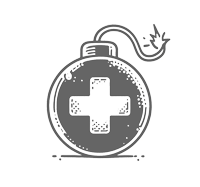
1 in 4 Americans have medical debt.
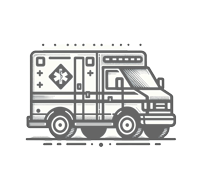
The average ER visit can cost more than a month’s rent.
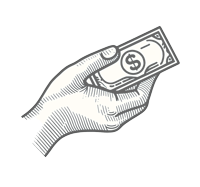
The healthcare industry spent $568 million on lobbying in 2020.
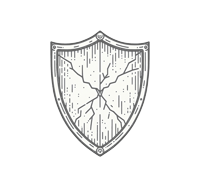
Over 28 million Americans are uninsured.
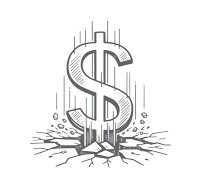
Healthcare costs grow about 5.7% each year.
Project Objectives
#1
Increase claim validation speed, minimize claim errors, and simplify the refund calculation process.
#2
Decommission Palantir, the software currently used to organize claim processes, communication, and claim analysis.
Building A New Team
Building Alignment
New product teams come with a myriad of hurdles. With the complexity of this project and the quantity of 35+ folks on the team, it was clear we were going to need additional attention to team communication, scale, and process.
Building Process
As the sole product designer on the project, I led and facilitated a hybrid product team through a lean, iterative approach to product development. This process included the introduction of dual track agile enabling the team to break down the project into smaller pieces.
Agile, Scrum, and Lean
With more than 35 people on the project, maintaining communication and building scalable practices were paramount to moving toward success. We solved this by enforcing agile product design, communicated through Scrum practices, and by building lean, demo-able iterations as we moved toward an MVP.
Setting Up Cadences
Introduced Dual-Track Agile
With multiple development teams assigned to this project and a focus on a Agile, I introduced the team to a Dual Track Agile framework. Dual Track Agile enables multiple teams—design included—to have a consistent workload without having to wait for the next handoff to continue building toward an MVP.
Every team is different—each with their own constraints, politics, and and goals. Based on this team, below is the design cadence I enforced to alleviate potential friction, dictate communication points, and enable a mindset of delivering value quickly.


Building Alignment
Product Canvas
Research began by facilitating a product canvas with key stakeholders on our team. The goal is to better understand areas of focus, gain team alignment, and build momentum with all parties moving forward with the same level of understanding.
This process narrows down the main objective, business goals, users, and user needs.
Common Themes
With an agree upon objective as well as goals, users, and user needs, we can can already see some common themes emerging from the early stages of discovery.
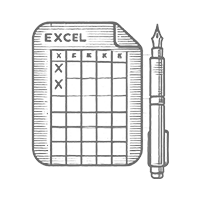
Manual Effort
The majority of the process exists in excel and requires manual entry.
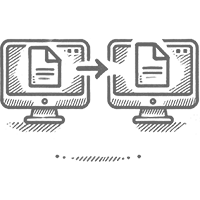
Hand-off Centric
The current process involves dozens of stakeholders, each requiring touchpoints along the process.
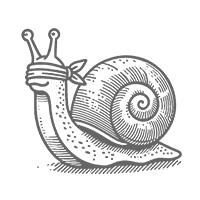
Slow & Opaque
Each portion of the process requires stakeholder sign-off. In some instances, this could take months.
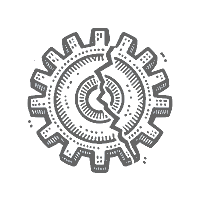
Error Prone
All of this means frequent mistakes. When mistakes occur, the friction of resolving them is high.
Narrowing Focus
Hypothesis Statements
Hypothesis Statements were written as a method of narrowing down potential directions for the first iteration of effort. Based on the user research up to this point, these are arguments that require challenging, prioritization, and testing.
Hypothesis Prioritization
To maintain communication among all stakeholders, I facilitated a team-wide Hypothesis Prioritization workshop to prioritize which hypotheses in the previous step should be the focus of effort for the upcoming iteration.
In this exercise, product owners and various stakeholders are able to debate the value of each outcome. Once value is determined, developers and engineers can estimate the amount of effort for each proposed solution.
Review
Where We’re At So Far…
Team Alignment
- Agreement on a main objective
- Agreement target audience
- Agreement on friction points
Success Criteria
- Understanding of prioritization
- Understanding of desired impact
- Understanding of potential solutions
Starting Momentum
- Communication with all stakeholders
- Prioritized features for the first iteration
- Potential backlog for future iterations
Design Phase
Design System
At this point, a design system was chosen to meet our constraints with tech stack, legal, and maintenance requirements.
MVP
A loose MVP was defined and a rough timeline created. Moving forward, each iteration should be a step closer toward that MVP.
Infrequent Wireframes
Based on our two-week sprint cycles and values of a lean, agile workflow, value of effort is better spent on quick high-fidelity mockups over wireframes.








